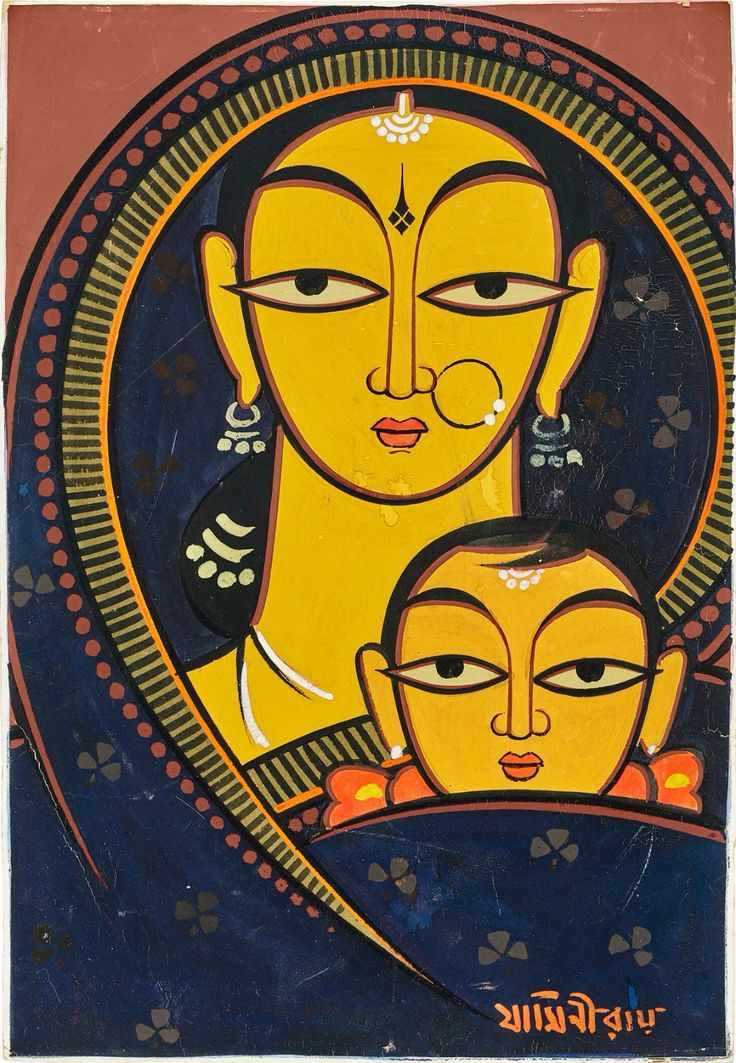
Kalighat painting - An Indian art’s sense of humour – colourful, cheeky, and full of personality!
One of the most distinctive and captivating art forms of India, originating from the bustling city of Kolkata, near the famous Kalighat temple, a key site of Hindu worship dedicated to the goddess Kali. These paintings, initially created by local artists called Patuas, were sold to pilgrims as religious souvenirs. The first Kalighat artworks focused on depicting deities, goddesses, and sacred Hindu myths, especially those associated with Kali and Durga, reflecting the spiritual essence of the region with vibrant colours, and unique style reflecting the cultural and social transformations of Bengal, particularly during the 19th and 20th centuries
The name "Kalighat" itself is derived from the temple, which was a major centre of pilgrimage for Hindus. The pilgrims would often buy small paintings to take back as offerings or religious tokens. These early artworks were usually painted on cloth or paper and were marked by bold lines, vivid colours, and a strong connection to traditional Indian iconography.
However, Kalighat paintings soon began to evolve as artists experimented with
new subjects and techniques. During the British colonial period, artists began incorporating Western styles, such as shading and perspective, alongside their traditional techniques. This resulted in a hybrid art form that still retained its distinctiveness but adapted to changing cultural dynamics.
By the late 19th and early 20th centuries, Kalighat artists began to explore new themes beyond religion. They started painting scenes of everyday life, political caricatures, portraits, and satirical depictions of contemporary events. These changes were a direct reflection of the social and political upheavals in Bengal and the wider Indian subcontinent under colonial rule.
Kalighat paintings are known for their bold colours, dynamic compositions, and strong use of lines. The themes in these paintings are diverse, ranging from spiritual and mythological subjects to social commentary, daily life, and even political satire, like:
Religious and Mythological Themes: The early Kalighat paintings were primarily focused on Hindu religious themes, depicting gods, goddesses, and mythological stories. Popular figures like Kali, Durga, Lakshmi, and Ganesha were commonly portrayed in these works, often shown in dramatic, dynamic poses.
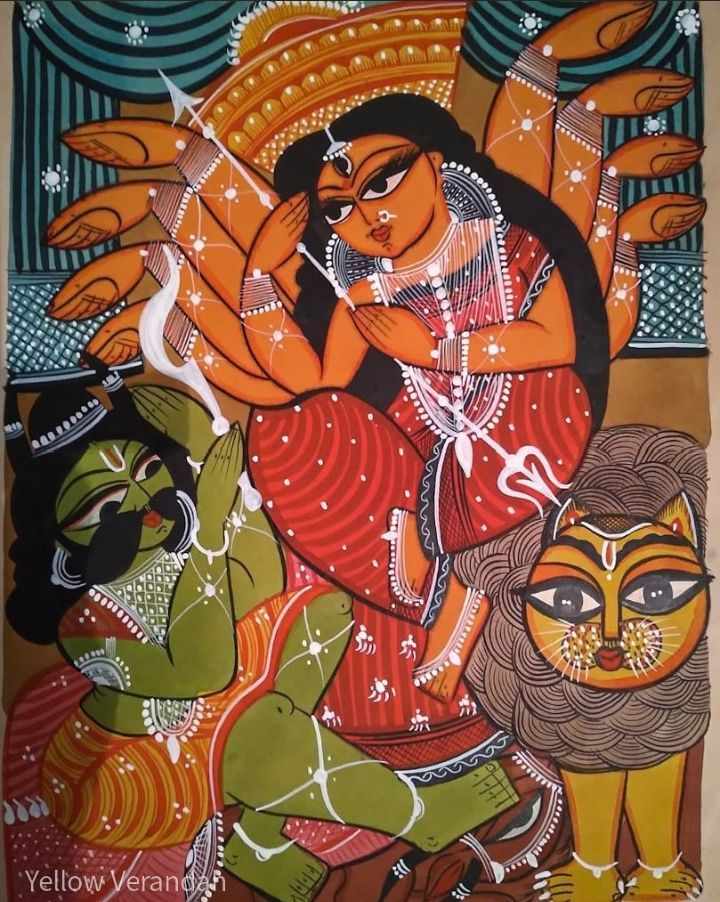
Social Life and Daily Scenes: As the genre evolved, artists began incorporating depictions of everyday life in their paintings. These works featured scenes such as women performing household chores, market scenes, laborers at work, and street vendors. Through these paintings, the artists provided a window into the social fabric of Bengal, depicting its people in their daily routines, often in a stylized, exaggerated manner.
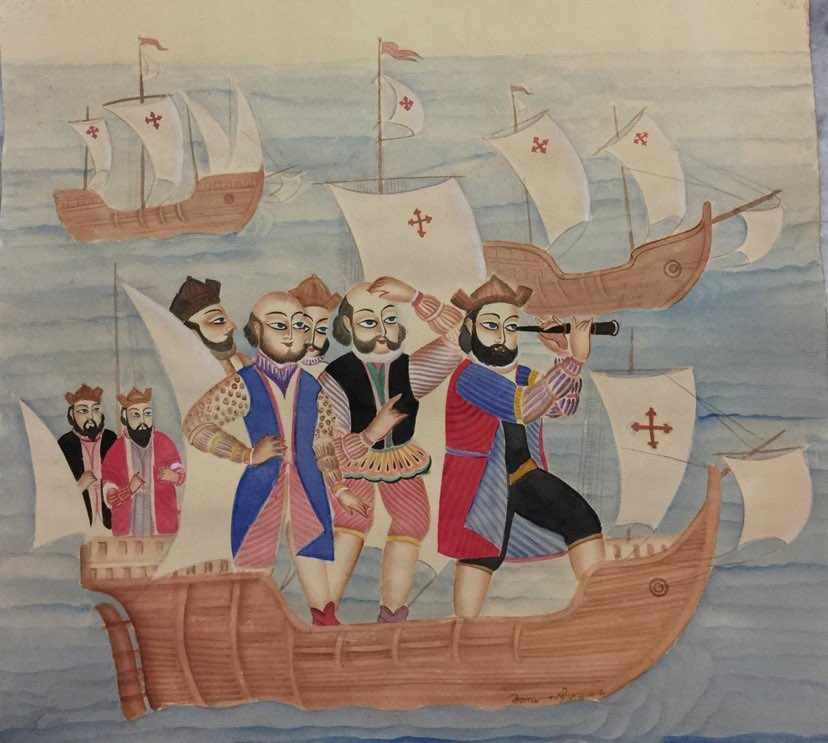
Political Satire and Caricature: With the rise of colonial rule and the subsequent social changes in Bengal, many artists began to use the medium to criticize British rulers and local politicians. The British officials were often depicted in humorous or mocking ways, with exaggerated facial features and actions. These works played a significant role in creating a sense of political awareness among the local population and were seen as a form of resistance to colonial rule.
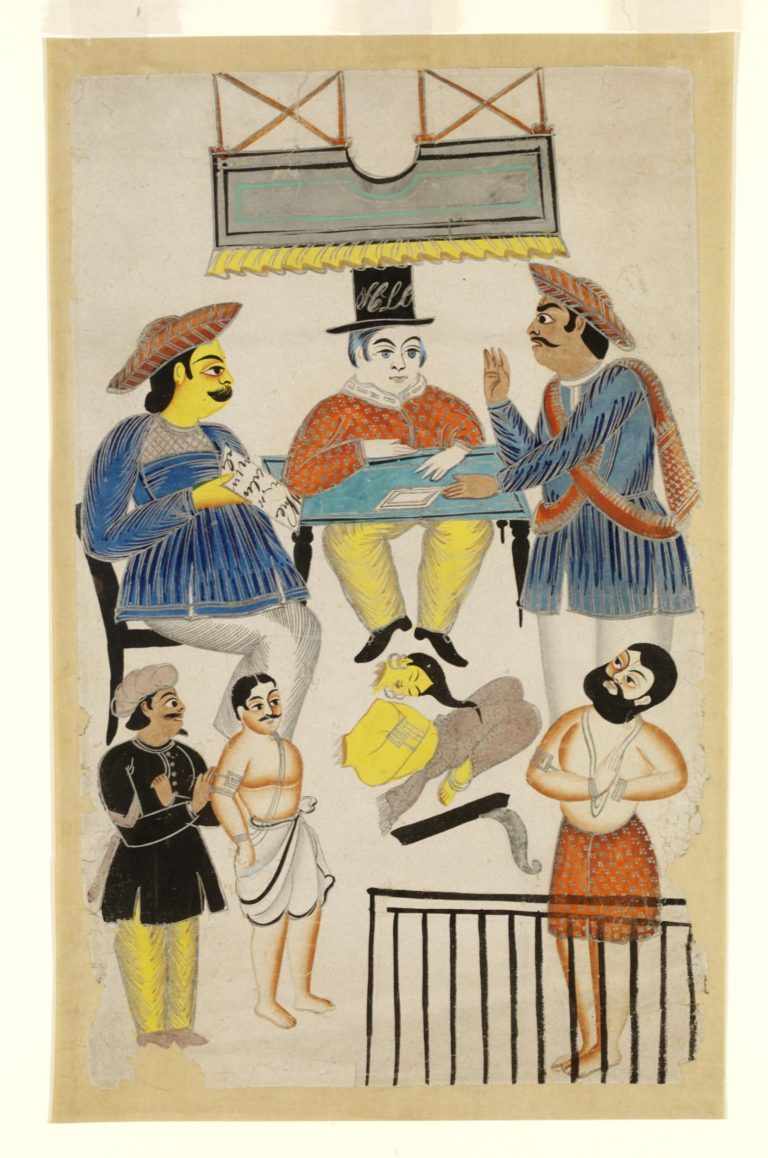
Folk Art and Rural Life: The artwork celebrated the rural people’s lives and often depicted village scenes, festivities, animals, and rural architecture. The artists’ ability to simplify and stylize forms gave the paintings a striking, graphic quality, which made them even more appealing to the growing urban audiences.
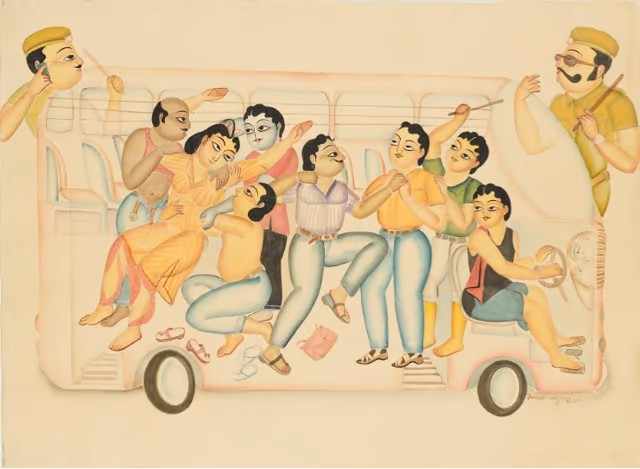
Materials and Techniques
Kalighat paintings were initially created using natural pigments derived from minerals, plants, and other organic materials, applied onto cloth or paper. The painters used brushes made from hair and sometimes used their hands to apply colour directly to the surface. The typical Kalighat artwork is marked by its bold, fluid brushstrokes, and strong outlines, with little to no shading. This technique helped convey a sense of movement and energy in the paintings.
As the genre evolved, artists began using watercolours or gouache on paper or canvas. The vibrant colours used in Kalighat paintings were a hallmark of the style, with a preference for bright, contrasting hues like yellow, red, blue, and green. The emphasis was on colour and line rather than detail or realism, and the overall effect was dynamic and expressive.
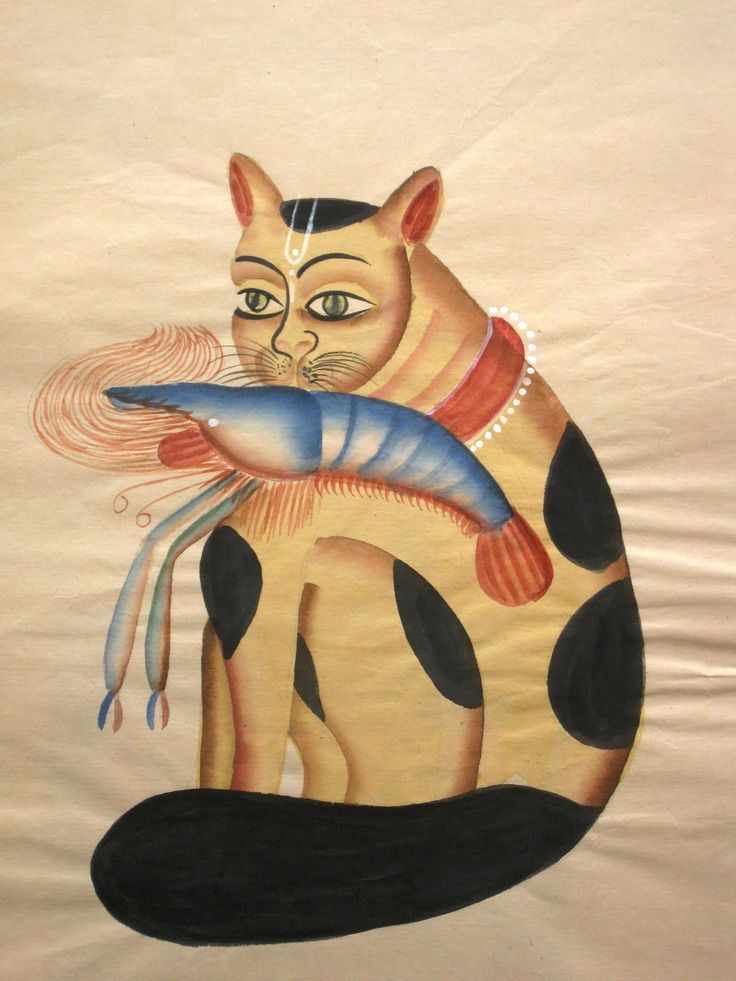
Kalighat cat and fish painting is a style of indian art that originated in the 19th century in kolkata, india. The paintings depict a cat holding a fish in its mouth and can be interpreted in a number of ways:
Religious hypocrisy: Brahmin priests who break their own commandments against eating meat and fish
Corruption: Moral decline of the ruling class.
Survival and resourcefulness: The painting may resonate with themes of survival and resourcefulness
Symbiotic relationship or the celebration of local fauna
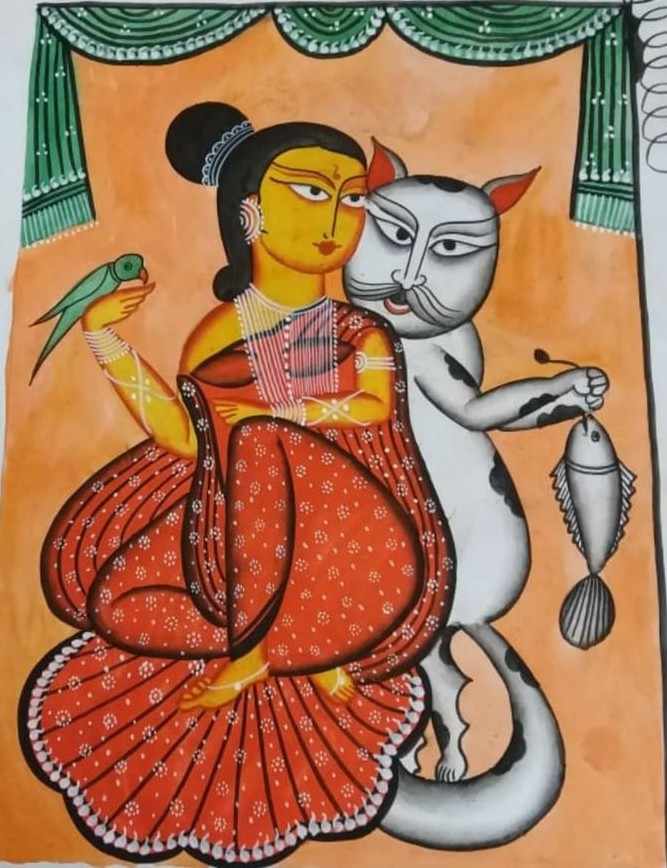
The relationship between the woman and the cat is often symbolic and can represent a variety of themes:
Devotion: As a devotee offering a flower to the goddess kali, who is often depicted with cats
Domestic life: The cat may represent the close relationship between humans and animals that is common in Bengali households.
Satire: The cat may represent a false ascetic who is unable to control their lust or avarice.
Jamini Roy: The Revolutionary Artist
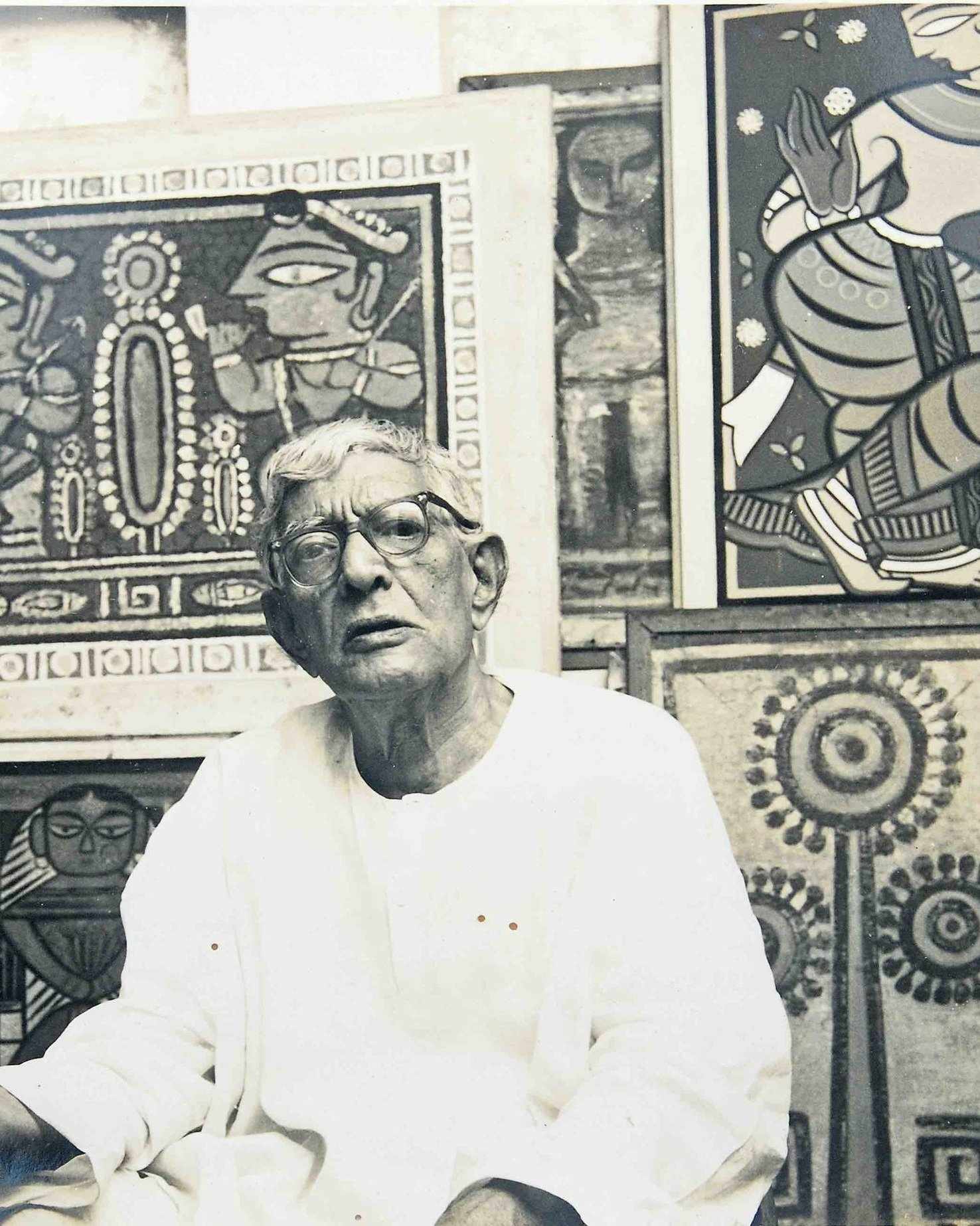
One of the most important figures in the history of Kalighat paintings is Jamini Roy. Born in 1887 in Beliatore, West Bengal, Jamini Roy is considered a pioneer of modern Indian art. Roy's journey as an artist is particularly fascinating because he played a significant role in transforming Kalighat painting from a regional folk tradition into an internationally recognized art form.
Roy began his formal training at the Government Art College in Kolkata, where he was introduced to Western art techniques. However, rather than adhering to Western styles, Roy chose to focus on the folk-art traditions of Bengal. He was particularly drawn to the Kalighat style, which he saw as a means of connecting with the indigenous art forms of India.
Roy rejected the European realism that dominated Indian art in the early 20th century and instead embraced the simplicity and boldness of traditional Bengal art. He found inspiration in the works of local folk artists, including the Kalighat painters, and began to reimagine them through a modern lens. He introduced geometric forms, simplified compositions, and a more abstract approach, giving his paintings a fresh and innovative look.
One of Jamini Roy’s most important contributions was his ability to adapt Kalighat painting for the modern era. He painted iconic images of Hindu deities such as Durga and Krishna, as well as rural life and folk motifs, using vivid colours and flat, two-dimensional forms. His works have been noted for their purity, simplicity, and emotional expressiveness, which helped Kalighat painting gain national and international recognition.
Roy’s works were celebrated not only for their aesthetic qualities but also for their social and cultural significance. He successfully bridged the gap between folk traditions and modernism, helping to revive and preserve Kalighat painting in the face of growing Western influence in Indian art. His unique fusion of traditional and modern styles remains one of the most enduring legacies of Indian art.
Few fun and fascinating facts about Kalighat — one of Kolkata’s most iconic and spiritually powerful spots:
Birthplace of Kalighat Patachitra
Kalighat gave rise to the famous Kalighat painting style, known for its bold lines, satire, and portrayal of gods, social life, and even babus (gentlemen) and courtesans.
One of the 51 Shakti Peethas
According to legend, Goddess Sati's toe fell at Kalighat, making it a key Shakti Peetha
The Temple Was Originally on the Ganges
The temple once stood right beside the original course of the Hooghly River (Ganges). Over time, the river changed direction.
Temple Bell Without a Clapper
The main temple’s bell is famously silent — it has no clapper inside, preserving the serenity of the shrine.
Unique Ritual Offerings
Devotees often offer red hibiscus flowers, sarees, and silver toe rings to the goddess Kali — all symbols of feminine power.









Write a comment ...